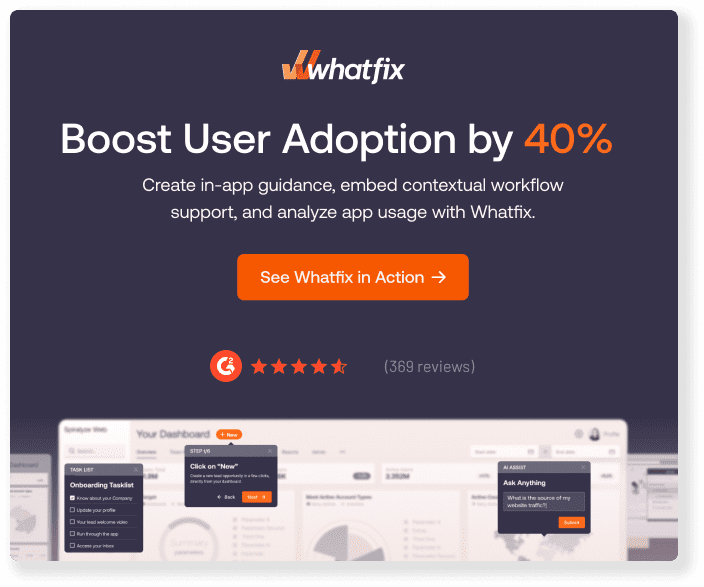Underperforming employees can significantly hinder organizational success. Research indicates that companies with effective performance management systems are 4.2 times more likely to outperform their competitors, experience 30% higher revenue growth, and have 5% lower attrition rates.
This underscores the importance of implementing strategies to boost employee performance. By fostering a culture of continuous feedback, providing targeted training, and leveraging digital tools, organizations can enhance productivity and achieve sustainable growth.
In this article, we’ll explore practical approaches to improve employee performance, focusing on continuous feedback, targeted training, and the integration of digital tools to foster a culture of growth and accountability.
What are the best strategies for improving employee performance?
- Set clear goals
- Reward and recognize your employees
- Have open lines of communication
- Identify and solve the root causes of poor performance
- Provide training opportunities
- Continuously monitor employee performance
- Keep deadlines realistic
- Balance accountability and authority
- Consider remote working options
- Enable employees with collaborative learning opportunities
- Avoid micromanaging
- Overcome skill gaps with reskilling and upskilling opportunities
- Offer internal leadership opportunities and clear career paths
What Is Employee Performance?
Employee performance is how effectively employees fulfill their responsibilities and contribute to organizational growth. Effective employees complete assigned tasks within their deadlines, reach established goals, and behave appropriately in the workplace.
Companies often assess employee performance on an annual basis to keep teams on track and support employee professional growth. Through this process, managers look at an employee’s general effectiveness, the quality and quantity of their work, and their overall output efficiency.
Common Causes of Employee Performance Problems
Many factors impact employee performance, from stress at home to work environments to training. Here are some of the most critical causes of poor work performance:
- Lack of clear goals: When employees don’t understand what success looks like or how their work contributes to broader objectives, motivation and focus tend to suffer. Clear, well-communicated goals give employees direction, purpose, and a sense of ownership.
- Unengaging work: Employees who feel underutilized or bored are less likely to contribute their best ideas. Work that lacks challenge, variety, or relevance to an employee’s strengths can lead to disengagement and burnout. Studies show that engaged employees are 44% more productive than those who are simply satisfied.
- Ineffective onboarding and training: When new hires are thrown into work without proper context or support, performance issues often follow. A consistent, well-structured onboarding process helps employees ramp up faster and sets the tone for long-term success. Tools like Whatfix help reduce training creation time by 40% and deliver in-the-flow learning at scale.
- Digital skills gaps: As technology evolves, employees need to keep pace. When training doesn’t match tool complexity or when self-service support is lacking frustration rises and productivity dips. Regular skills assessments and just-in-time learning can help bridge the gap.
- Outdated tools and processes: Legacy systems, manual workflows, and siloed data slow down even the best employees. Poorly integrated tech stacks create friction that eats into time and mental bandwidth, often without teams realizing the true cost.
- External stressors: Broader societal issues, industry disruptions, and political events all have an emotional and cognitive impact. Left unaddressed, these can lead to disengagement, presenteeism, or quiet quitting. Empathetic leadership and workplace flexibility can help employees stay grounded and resilient.
13 Actionable Strategies to Improve Performance in 2025
With so many contributing factors, finding the best starting point for performance improvement can be difficult. Here are thirteen best practices you can implement to improve performance:
1. Set clear goals
Employees can’t be expected to succeed professionally without clear goals to aim for. Managers need to ensure that team members understand their responsibilities and establish a common understanding of expectations for growth.
When employees are given clear, attainable goals, they are more likely to respond positively and put extra effort into reaching growth milestones and accomplishing more at work. Clear goals provide a sense of direction and increase motivation to raise productivity.
To define clear and measurable performance goals, use the SMART goals (specific, measurable, achievable, relevant, and time-based) framework to drive employee performance all year round. These goals will help provide data and insights that allow managers to measure employee performance and set the stage for continuous improvement.
2. Reward and recognize your employees
One of the best ways to encourage employee productivity is to provide incentives and recognition. Recognition and positive reinforcement motivate employees to continue outperforming themselves.
Incentives like monetary bonuses and awards are also effective for demonstrating to team members that their work is valued. Even small gestures like a thank-you email or recognition in meetings can go a long way toward boosting morale and employee experience. A balanced flow of monetary rewards and constant employee recognition is the best recipe for strong employee performance.
3. Have open lines of communication
Effective communication between employees, leadership, and even customers is essential for business success. According to the European Journal of Business and Management Research, effective communication has a substantial influence on employee performance.
Effective business communication enhances management practices, promotes collaboration, improves stakeholder relationships, and boosts employee engagement. And as more companies operate remotely, communication has become an even bigger priority.
Managers can promote effective communication by implementing communication and collaboration tools that help foster openness, collaboration, and feedback across teams. Applications like Slack, Microsoft Teams, and Loom allow employees to communicate instantly via messages and calls.
4. Identify and solve the root cause of poor performance
When left unaddressed, poor performance can ripple beyond one role affecting team dynamics, morale, and overall productivity. That’s why it’s crucial for managers to recognize and resolve performance issues early.
Here’s a simple approach to addressing underperformance:
- Diagnose the cause: Is the employee in the right role? Are they lacking training, overwhelmed by workload, or unclear on expectations? Understanding the root cause is the first step toward resolution.
- Develop a support plan: Based on the issue, outline actionable steps. This might include setting realistic goals, offering targeted training, reallocating responsibilities, or simply providing more clarity.
- Communicate with empathy: Have an open, honest conversation. Give specific feedback, focus on solutions (not blame), and position the conversation as a path to improvement, not a reprimand.
5. Provide training opportunities
Organizations of all sizes can benefit by implementing employee training software to develop effective and standardized learning experiences for employees. Effective training keeps employees motivated, enhances their knowledge, and improves performance.
A digital adoption platform (DAP) empowers managers to easily create learning content that helps employees learn new tools and applications within the software they use every day. Step-by-step walkthroughs, pop-ups, and tooltips provide real-time guidance for exceptionally relevant and timely learning experiences.
6. Continuously monitor employee performance
High-performing teams don’t happen by accident, they’re built through consistent performance tracking and clear, constructive feedback. Monitoring isn’t about micromanagement; it’s about creating transparency and identifying opportunities for growth.
One effective framework is the 9-box grid, which helps managers assess employees based on two factors:
- Current performance (meeting, exceeding, or falling short of expectations)
- Growth potential (capacity to take on more responsibility or leadership)
This matrix helps categorize employees into groups like “High Performer, High Potential” or “Low Performer, Moderate Potential,” enabling targeted development plans and succession planning.
When used thoughtfully, performance evaluations clarify expectations, spotlight strengths, and guide improvement. Employees feel more supported and more accountable when they know where they stand and how they can grow.
7. Keep deadlines realistic
Some managers believe that applying pressure to their teams will increase productivity. However, cranking up deadlines and other expectations doesn’t always produce better results.
Applying too much pressure leads to employee burnout, disengagement, and poor work quality. Managers need to create deadlines and extension policies that allow enough time for employees to produce quality work. Set realistic deadlines and tailor them to project requirements and employee needs. Project management software like Asana or Trello empowers managers and employees to track progress and adapt deadlines to evolving circumstances.
8. Balance accountability and authority
Managers can improve performance by empowering employees to take accountability for their successes and failures. This should be balanced with the authority managers hold to guide employees to maximize their performance through deadlines, rewards, and consequences.
Managers should assert their authority to guide employees in fulfilling their obligations while also empowering them to take accountability for deciding how to best manage their responsibilities and achieve their assigned goals, targets, and deadlines.
Workplace tools like messaging platforms and performance management software can make this easier for managers by centralizing task management and allowing managers to oversee progress without micromanaging their team members.
9. Consider remote working options
Allowing employees to work from home may seem detrimental to performance improvement, but research shows the opposite is often true. According to the US Bureau of Labor Statistics, productivity rose along with remote work across 61 industries. As a result, 74% of employees say they feel happier when working remotely, and 50% of employees say they would be willing to take a pay cut to keep the option of remote work as more and more companies return to the office.
Working remotely offers employees better work-life balance and the freedom to accomplish work responsibilities on their own terms. This results in higher employee satisfaction and engagement, which in turn leads to higher levels of focus and productivity. The key to managing a remote workforce is practicing open communication, keeping employees engaged, monitoring your teams’ productivity, and providing continuous support.
10. Empower employees with collaborative learning opportunities
Collaborative training is a methodology that enables employees to learn from one another through activities like peer-to-peer teaching and group projects. This technique allows employees to leverage the expertise already present in their team.
Collaborative training not only helps employees develop a wide range of skills and knowledge, but also fosters teamwork and builds a positive work culture that improves employee satisfaction and performance.
11. Avoid micromanaging
Micromanagement often stems from good intentions but it usually leads to the opposite of what’s intended. When employees feel overly scrutinized, they interpret it as a lack of trust, which can lead to disengagement and decreased performance.
Instead of focusing on constant oversight, effective managers lead through clarity, accountability, and support. That means setting expectations, providing the tools and guidance employees need, and then stepping back to let them own their work.
Key signs of micromanagement include:
- Hesitating to delegate
- Asking for constant updates
- Dictating how every task should be done
- Focusing on consequences over motivation
- Struggling to trust your team’s judgment
12. Overcome skill gaps with reskilling and upskilling opportunities
Reskilling is the acquisition of new knowledge or skills, allowing an employee to move into a different role. Upskilling, on the other hand, refers to learning additional skills to become better equipped for one’s current job.
For example, a manager who notices one of their customer support team members possesses especially strong consultative skills might give them reskilling opportunities to facilitate their transition into a customer success role.
Providing continuous learning opportunities for employees is a powerful way to show them that their employer is invested in their progress. These opportunities lead employees to feel happier, satisfied, and motivated in their roles, which, in turn, boosts employee productivity, satisfaction, and retention rates within an organization.
13. Offer internal leadership opportunities and clear career paths
When employees see a future at your company, they’re more motivated to perform at their best. Rather than relying solely on external hires for leadership roles, organizations must invest in internal talent development and offer clear growth pathways.
A structured succession planning strategy helps identify high-potential employees and prepare them for critical roles as they open up. It’s not just about filling gaps but about building a strong, motivated pipeline from within.
Here’s a simplified view of the succession planning process:
- Assess: Define critical roles, future business needs, and potential skill gaps.
- Evaluate: Identify high-potential employees and map their competencies against future roles.
- Develop: Create targeted development plans, mentorship opportunities, and knowledge transfer strategies.
By embedding career growth into your culture, you encourage employees to invest in their own development, which ultimately strengthens team performance and retention.
Employee Performance Metrics & KPIs
Here are some of the most critical metrics managers can use to measure and improve employee performance:
- Productivity rate: An employee’s output over a specific time increment.
- Employee engagement scores: A measure of how engaged employees are with their work. This metric can be calculated through engagement surveys and other forms of feedback.
- Quality of work (error rate): The number of errors an employee makes compared to the number of attempts.
- On-time delivery: The percentage of orders or products delivered within a given timeframe.
- Sales and revenue goals: The frequency at which an employee meets or exceeds their stated sales and revenue goals.
- Customer satisfaction (CSAT): A measure of how satisfied customers are after an experience with a company or one of its employees. This can be measured by sending customers feedback surveys to complete after a customer service interaction.
- Net Promoter Score (NPS): A measure of customer satisfaction and loyalty based on customer survey responses.
- Average Handle Time (AHT): How long an employee typically takes to complete interactions with customers. This can be measured by calculating the average call time for a specific employee over a specific period.
- Training Completion Rate: The number of employees who completed a particular training program compared to the number of employees registered to attend.
Frequently Asked Questions
Improving employee performance can be a long and winding journey. Here are some of the most commonly asked questions about improving employee performance, and our take on the answers:
Q: How often should employee performance be evaluated?
A: Leaders should check themselves if they tend to micromanage, but can generally rely on their expertise when deciding how often to assess employee performance. At a minimum, employees should undergo formal performance reviews on an annual basis. However, with modern performance monitoring software, managers can continually oversee performance and address issues as they arise.
Q: What is the best tool for employee performance improvement?
A: There are a variety of software on the market today that help managers monitor performance and help employees acclimate to new workplace responsibilities. Applications like performance monitoring software, self-service knowledge bases, and digital adoption platforms all fit the bill. Digital adoption platforms like Whatfix provide continual in-app performance support with features like interactive walkthroughs, product tours, and in-depth training analytics.
Q: How do you maintain employee motivation over the long term?
A: There is no quick fix for keeping employees motivated. Instead, managers should take a holistic approach by creating a positive work environment, providing necessary support and resources, and treating employees with the respect they deserve.
Employee Training Clicks Better With Whatfix
Improving employee performance takes more than traditional training, it requires enabling employees with real-time, personalized support directly within the tools they use every day. That’s where Whatfix comes in.
Whatfix Digital Adoption Platform (DAP) empowers organizations to drive continuous performance improvement by embedding training into the flow of work and providing the visibility needed to optimize enablement strategies. With Whatfix, HR, L&D, and team leaders can:
- Accelerate time-to-productivity with in-app guidance such as Flows, Smart Tips, and Task Lists that walk employees through key workflows step-by-step.
- Reduce support dependencies by surfacing contextual Self Help and knowledge base content within the application exactly when and where employees need it.
- Reinforce learning continuously through performance support delivered at the moment of need, helping employees upskill without leaving the platform.
- Uncover adoption bottlenecks with real-time product analytics that track user behavior, highlight underutilized features, and identify friction points.
- Enable data-driven decision-making by giving managers insights into where employees are struggling and which tools are slowing down productivity.
By equipping your workforce with Whatfix, you move beyond one-time training and toward a sustainable, scalable model for performance enablement. See how Whatfix helps your employees do their best work, book your personalized demo with us today.













